Scuba Diving in the Philippines: Best Sites, Costs, Tips & Resorts (2025 Guide)
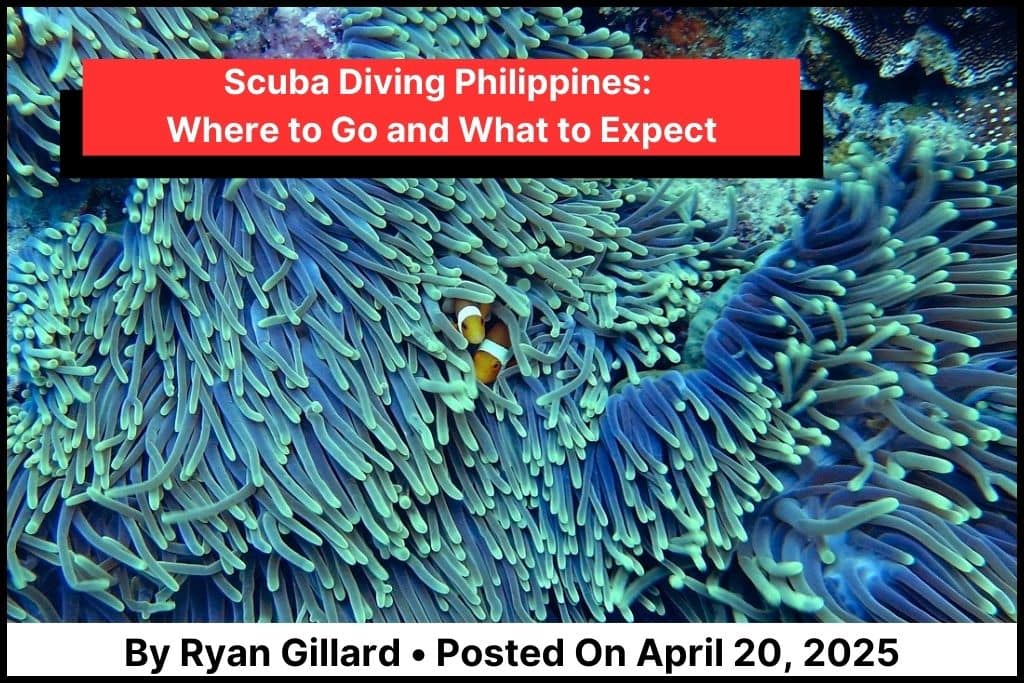
Thinking about scuba diving in the Philippines? Wondering where the best dive sites are, what it costs, and how to plan an epic dive trip? You’re not alone, this is one of the most popular questions among divers and adventure travellers planning their next big experience.
In this guide, we’ll dive deep into what makes scuba diving in the Philippines so special, the best places to go, what you can expect, and how to plan a seamless, unforgettable trip.
Why Scuba Dive in the Philippines?
The Philippines is home to over 7,000 islands, many surrounded by coral reefs teeming with marine life. Located in the heart of the Coral Triangle, it’s considered one of the most biodiverse marine environments on Earth.
Here’s why divers from around the globe travel here:
- Unmatched Marine Biodiversity: Home to over 2,000 species of fish and 500+ coral species
- Warm Water Year Round: Temperatures range from 26–30°C (79–86°F)
- Affordable Diving: Competitive pricing for fun dives and PADI certification
- Diverse Sites: From shallow coral gardens to deep walls, muck dives, wrecks, and pelagic encounters
Best Scuba Diving Destinations in the Philippines
Whether you’re a new diver or seasoned underwater explorer, there’s a dive site in the Philippines for you.
1. Malapascua, Cebu
- Famous for: Thresher shark sightings
- Best time to visit: November to May
- Highlights: Monad Shoal, Gato Island, Kimud Shoal
- Perfect for: Intermediate to advanced divers
- In Malapascua, consider staying at the cozy Exotic Island Dive Resort with daily shark dives.
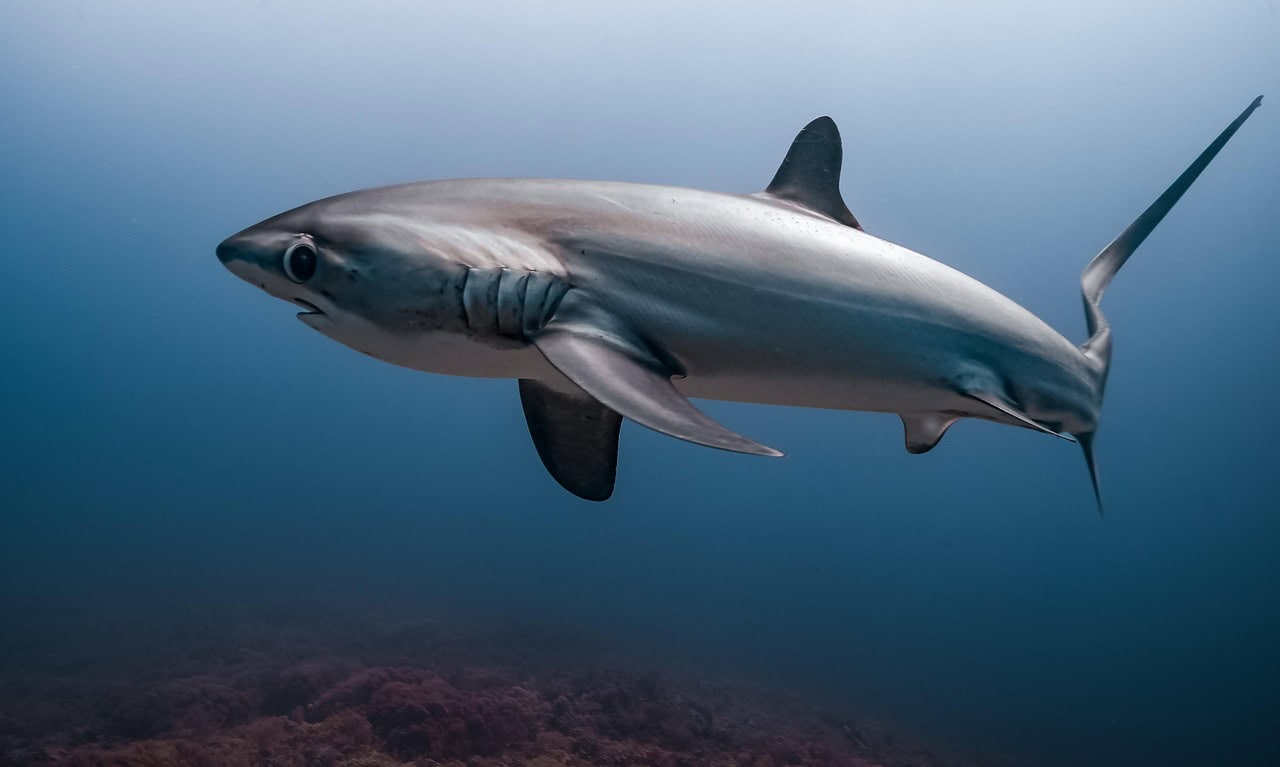
2. Moalboal, Cebu
- Famous for: The Sardine Run, a massive school of sardines near shore
- Best time to visit: Year round
- Highlights: Sardine Run from the shore, Pescador Island, Tongo Point, night diving
- Great for: A good base for exploring much of Cebu, adventure activities, canyoneering, scuba diving, good party and restaurant scene.
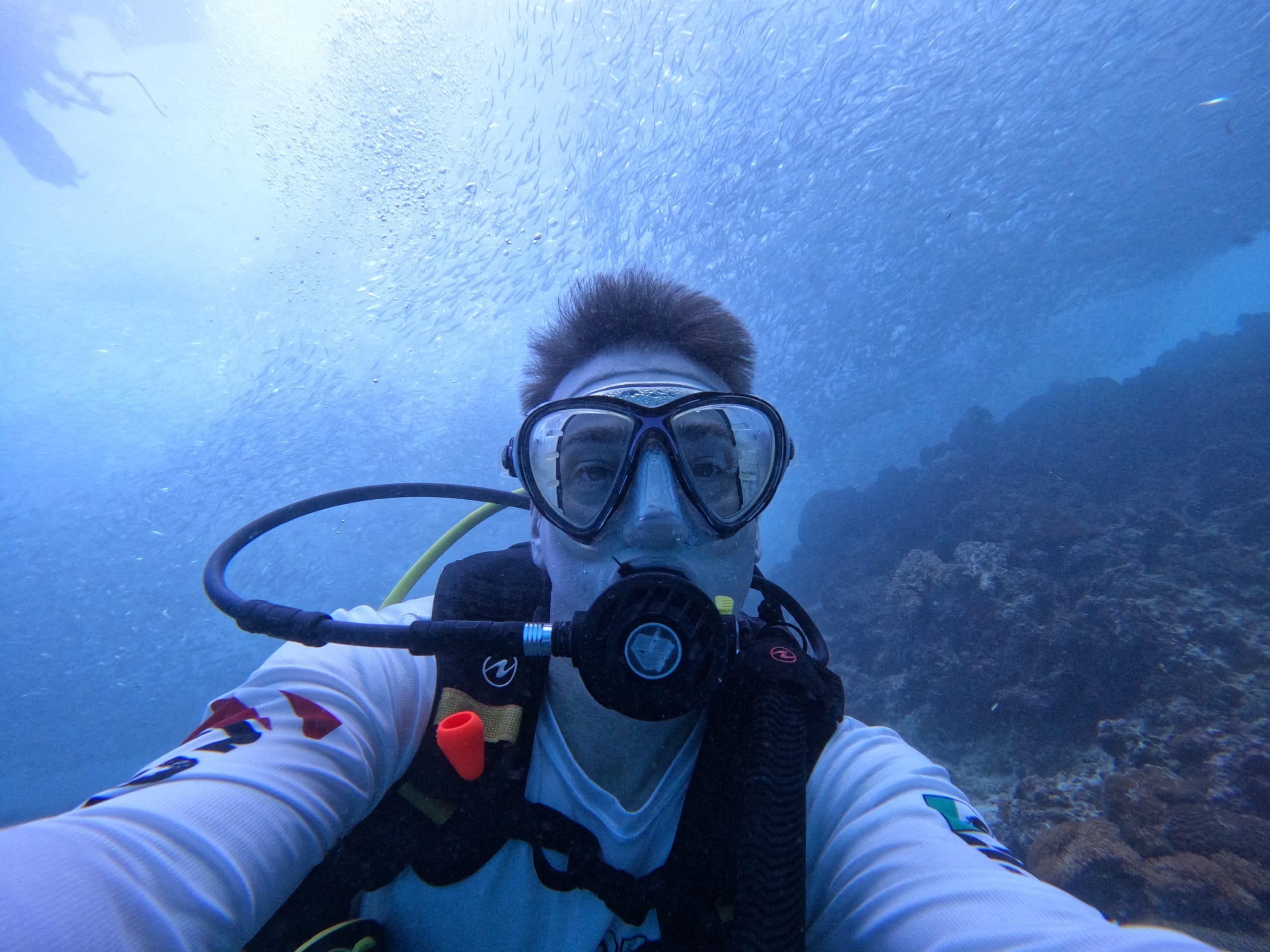
3. Bohol (Panglao & Balicasag Island)
- Famous for: Turtles, steep coral walls, and pristine coral
- Highlights: Balicasag Island, Doljo Point
- Perfect for: All levels
- Tip: Check out our Bohol Travel Guide for more information.
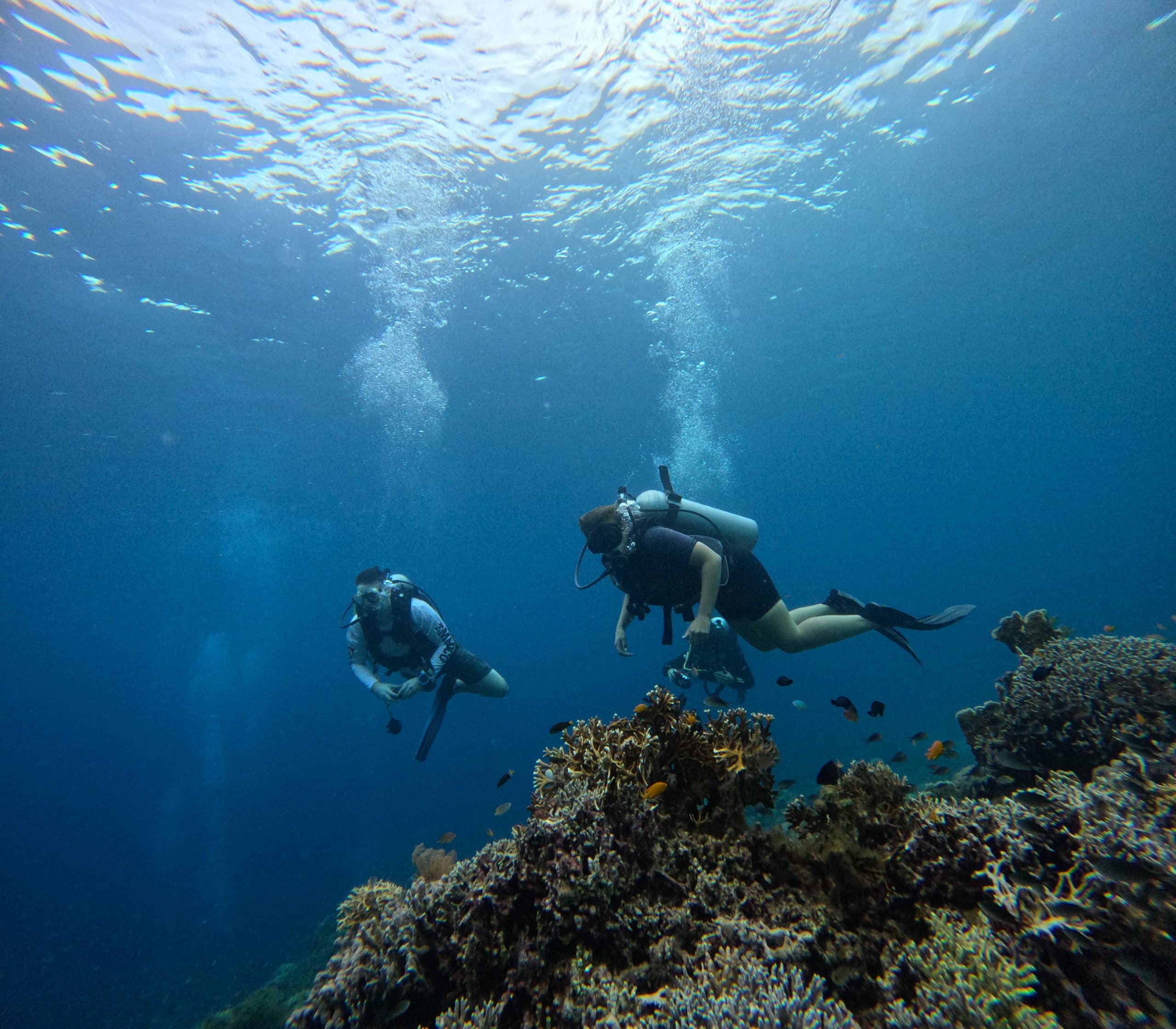
4. Puerto Galera, Mindoro
- Famous for: Macro life and vibrant reefs
- Highlights: Sabang Wrecks, The Canyons, Verde Island
- Best for: Scuba divers, beach lovers, and those looking for electric nightlife.
- Tip: Many dive resorts here double as social hubs with bars and beachfront restaurants.
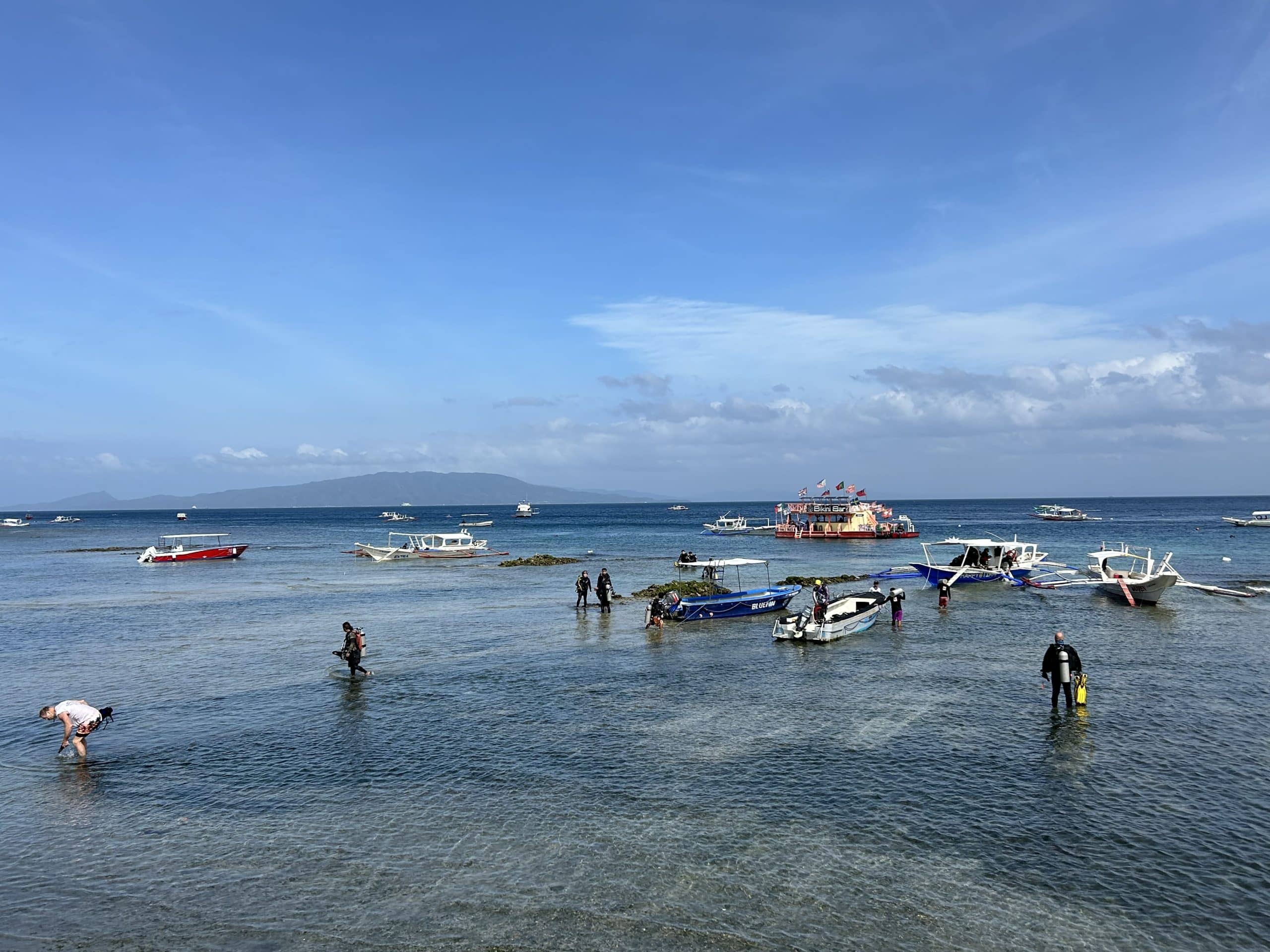
5. Apo Reef & Apo Island
- Apo Reef: The second largest contiguous coral reef system in the world
- Apo Island: Famous for sea turtles and marine sanctuaries
- Best for: Eco conscious divers and marine conservationists
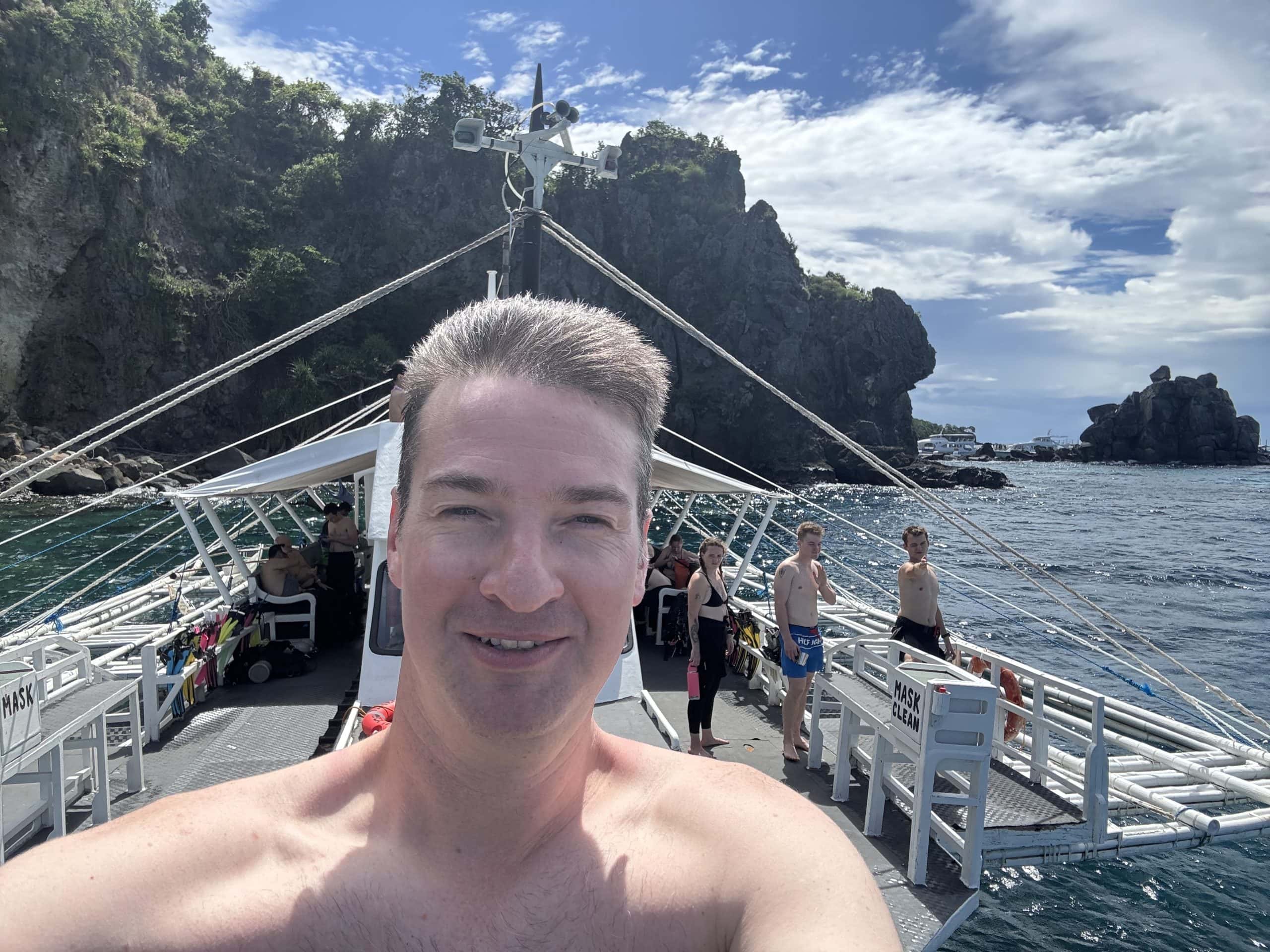
6. Coron, Palawan
- Famous for: World War II wreck diving
- Highlights: Okikawa Maru, Irako, Barracuda Lake
- Great for: Advanced divers seeking something unique
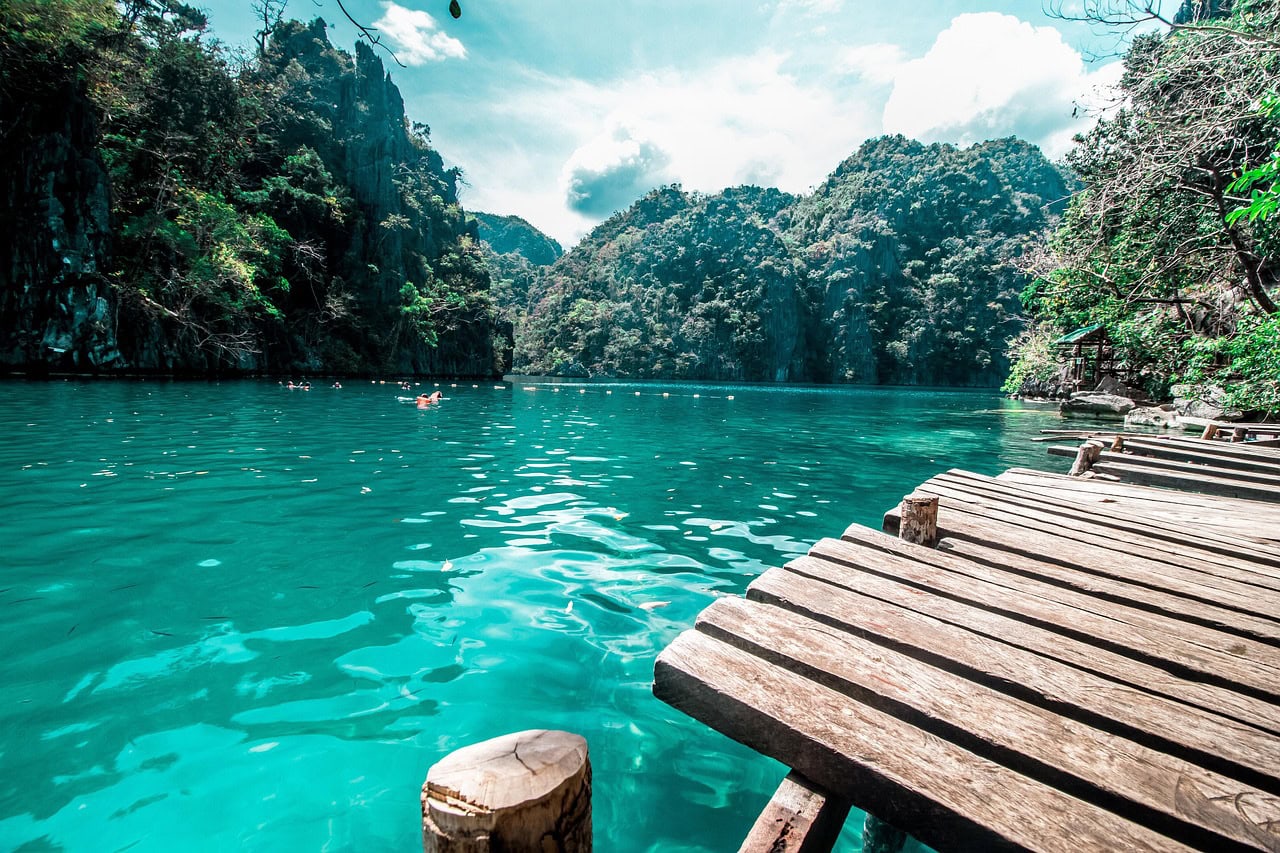
💡 Thinking about getting certified while you’re here?
The Philippines is actually one of the most affordable and beautiful places in the world to learn to dive. With crystal clear water, warm temperatures, and friendly instructors, it’s perfect for beginners.
👉 Here’s how to get your scuba diving license in the Philippines
When Is the Best Time to Go Scuba Diving in the Philippines?
- Dry Season (Nov–May): Ideal for most regions, with calm seas and clear visibility
- Rainy Season (Jun–Oct): Still diveable in many places like Moalboal and Dauin; however, expect some weather unpredictability
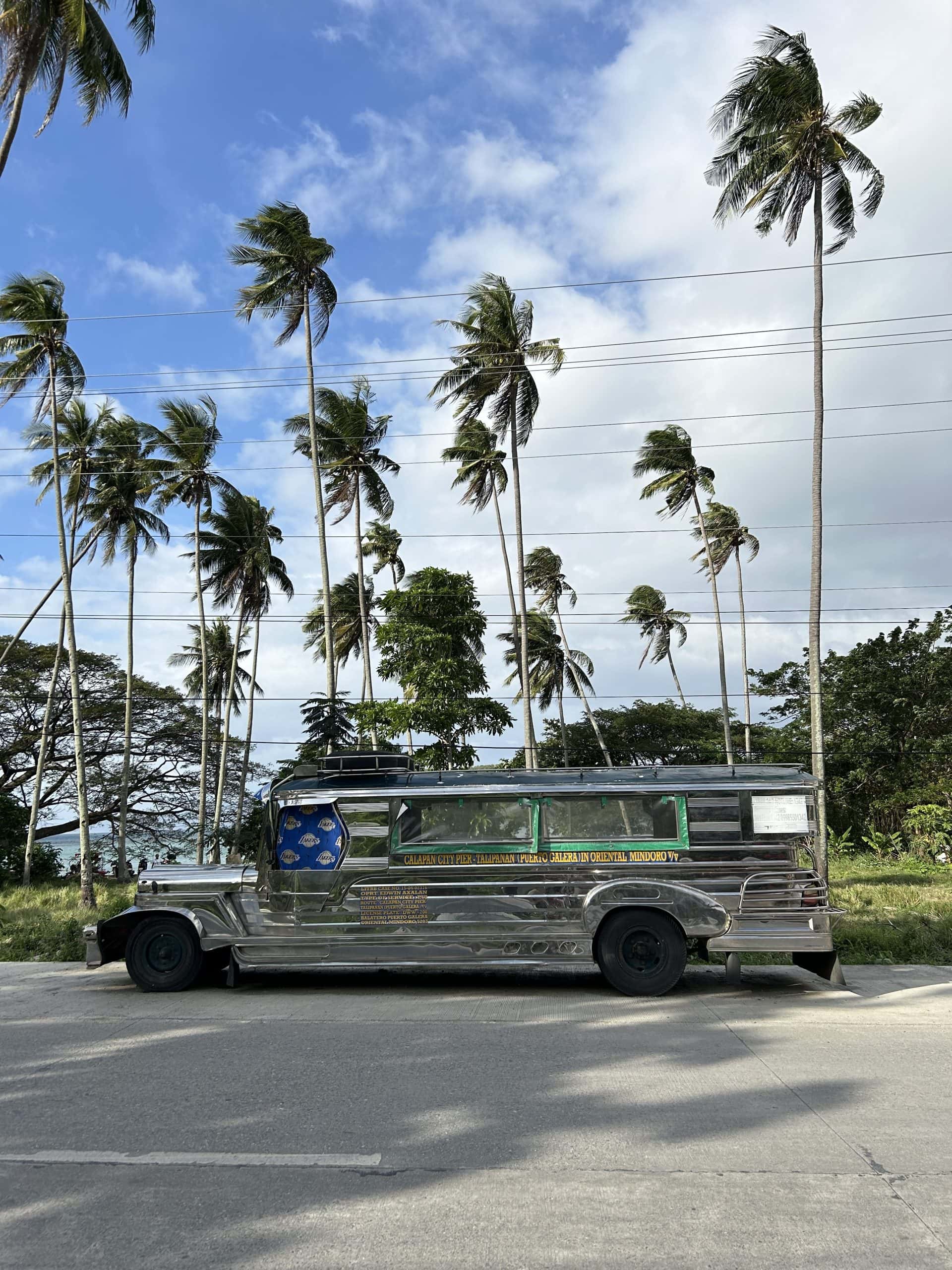
How Much Does Scuba Diving Cost in the Philippines?
The cost of scuba diving varies by location, but here’s a general guide:
- Fun Dives: $25–$35 USD per dive
- Open Water Certification (PADI): $300–$450 USD
- Advanced Open Water: $320–$480 USD
Look for package deals that include accommodation, diving, and airport transfers. We’ve listed some of our favourite affiliate partners below to help you save and book with ease.
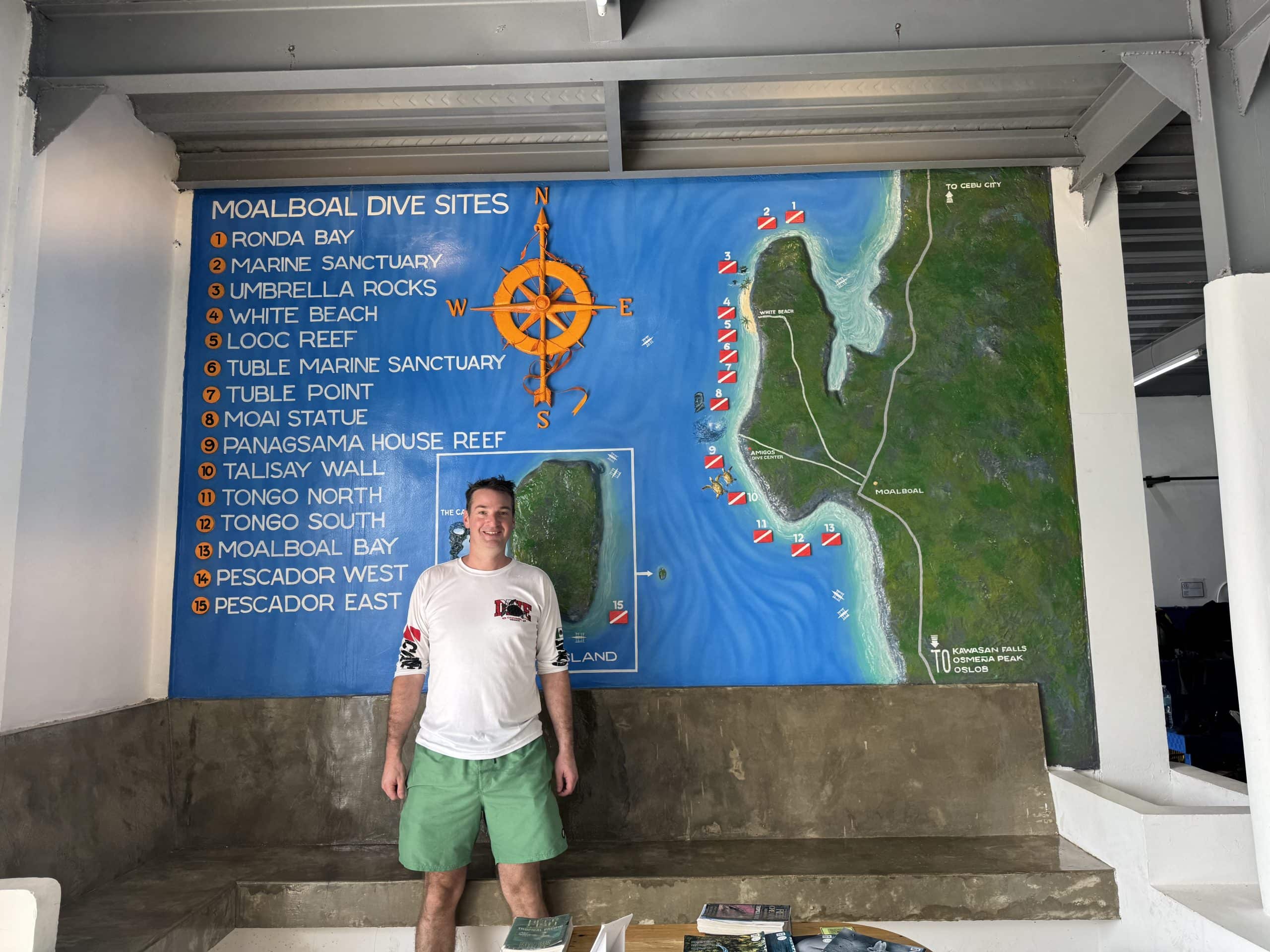
Tips for Planning Your Trip
Here are some useful tips to make your dive vacation seamless:
- Book early during peak months (December to April)
- Use an eSIM like Airalo to stay connected between islands – check them out here!
- Bring reef-safe sunscreen to protect marine life
- Travel with insurance that covers diving—check out providers like SafetyWing or World Nomads
- Download Grab App for taxi bookings in major cities
Don’t forget to check our Philippines Travel Guide for updated tips on transportation, weather, and regional restrictions.
Where to Stay: Dive Resorts & Hostels
Here are some diver friendly accommodation options:
- Malapascua Exotic Island Dive Resort, Malapascua – Cozy bungalows and daily thresher shark dives
- Neptune Diving Resort, Moalboal – Centrally located with group packages
- Alona Vida Dive Resort, Panglao, Bohol – Eco-friendly resort near dive sites
- Big Apple Dive Resort, Puerto Galera – Great for solo divers and nightlife
Find the best hotel prices and read verified reviews with Trip.com.
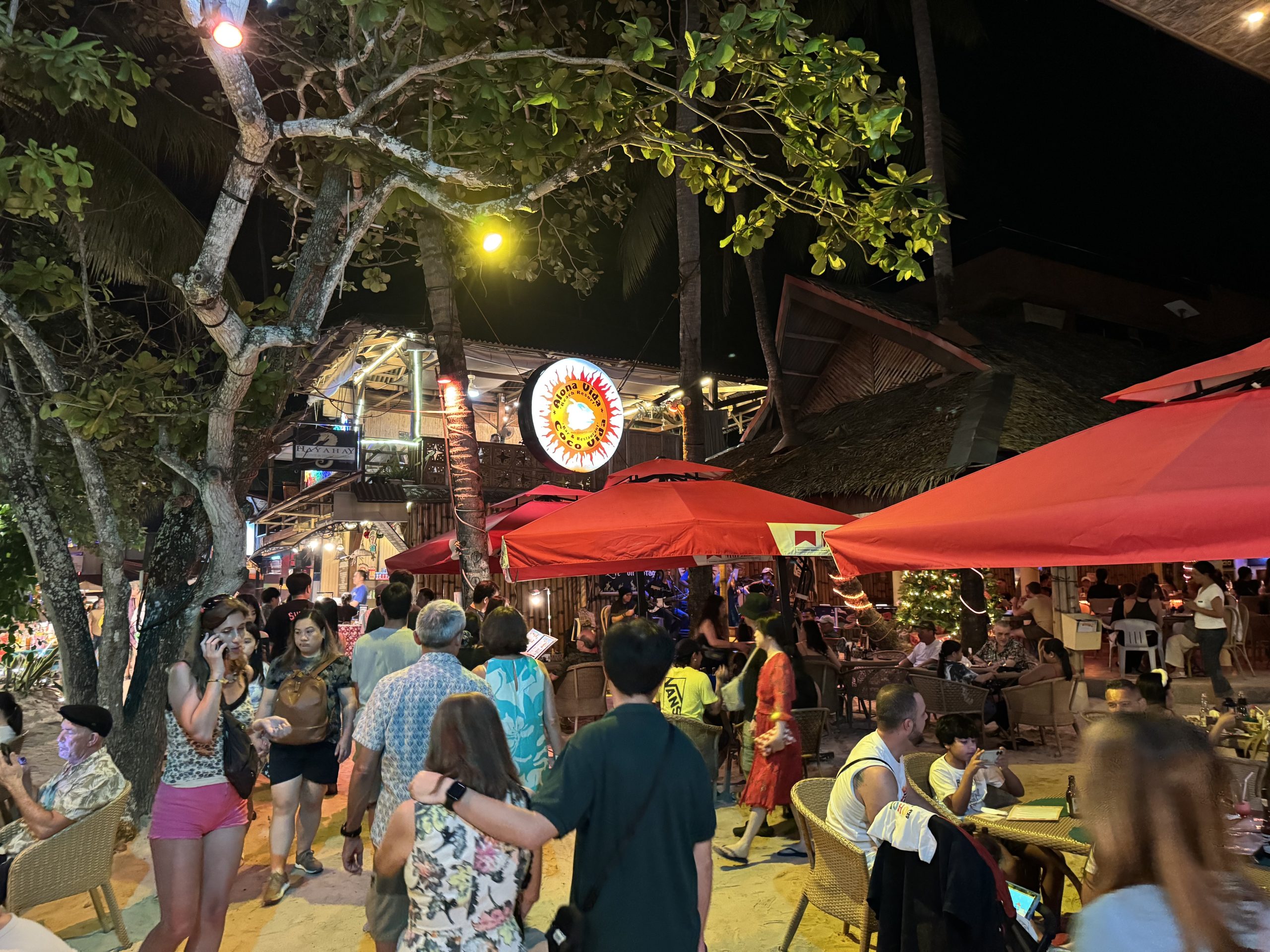
Travel Gear Recommendations
Want to avoid renting low quality gear? Bring these essentials:
- Mask and snorkel
- Travel friendly fins
- Dive computer
- Dry bag for diving, snorkelling, and going to the beach
- GoPro Camera for capturing epic underwater videos
Frequently Asked Questions About Scuba Diving in the Philippines
1. Is the Philippines good for scuba diving?
Yes, the Philippines is considered one of the best scuba diving destinations in the world. With warm tropical waters, excellent visibility, and world-famous dive sites like Tubbataha Reef, Malapascua, and Apo Island, it offers something for all experience levels.
2. Where is the best scuba diving in the Philippines?
Top dive spots include:
- Malapascua (for thresher sharks)
- Moalboal (for sardine runs and reef diving)
- Balicasag (for turtles and macro life)
- Coron (for WWII wreck diving)
- Apo Island (for pristine coral reefs)
3. How much does scuba diving cost in the Philippines?
Fun dives typically cost between $25 to $40 USD per dive, depending on the location and dive shop. Certification courses like the Open Water Diver course range from $300 to $450 USD.
4. Can beginners go scuba diving in the Philippines?
Yes, most dive shops offer discovery dives and full certification courses for beginners. The calm conditions and professional instructors make it a great place to learn.
5. What is the best time of year to dive in the Philippines?
The best diving conditions are usually from November to May, during the dry season. However, destinations like Moalboal and Puerto Galera have good diving all year round.
6. Do I need to book dives in advance?
While walk ins are possible, it’s a good idea to book dive trips or packages in advance, especially during high season or if you want to dive with specific shops or at high demand sites like Tubbataha, Coron wrecks, Balicasag & Apo islands .
7. What marine life can I expect to see?
The Philippines is home to:
- Thresher sharks (Malapascua)
- Turtles (Balicasag, Apo Island)
- Sardine bait balls (Moalboal)
- Manta rays and whale sharks (seasonal)
- Macro life like frogfish, nudibranchs, and seahorses
8. What dive gear should I bring to the Philippines?
You can rent quality gear at most dive shops, but if you’re doing multiple dives, consider bringing:
9. Is scuba diving safe in the Philippines?
Yes, as long as you choose a reputable dive shop, follow safety briefings, and stay within your limits, scuba diving in the Philippines is very safe. Always check dive shop reviews and make sure they’re PADI or SSI certified.
10. Can I travel with my dive gear to the Philippines?
Yes, but check baggage allowances with your airline. Many divers bring lightweight essentials like masks, fins, and dive computers while renting heavier gear on site.
Conclusion: Why Scuba Diving in the Philippines Is a Must Do
With its abundant marine biodiversity, affordable prices, and diver friendly infrastructure, the Philippines is one of the best scuba diving destinations in the world. From thresher sharks in Malapascua to sardine storms in Moalboal and WW2 wrecks in Coron, there’s something here for every kind of diver.
💌 Join 1,000+ adventure travelers getting exclusive dive guides and trip hacks straight to their inbox!
👉 Subscribe now — it’s free and full of real travel tips, not spam.
Ready to plan your trip?
Book flights, hotels, eSIMs, and more through our recommended affiliate links. It helps support the blog and ensures you’re getting travel tested resources.
- ✈️ Book Your Flights Here
- 🏝️ Find Dive Resorts in the Philippines
- 📱 Get a Philippines eSIM
- 🧳 Shop Travel Gear
- 💸 Buy Travel Insurance
- 🌄 Book incredible day trips throughout the Philippines here!
Stay safe, dive smart, and keep exploring!

